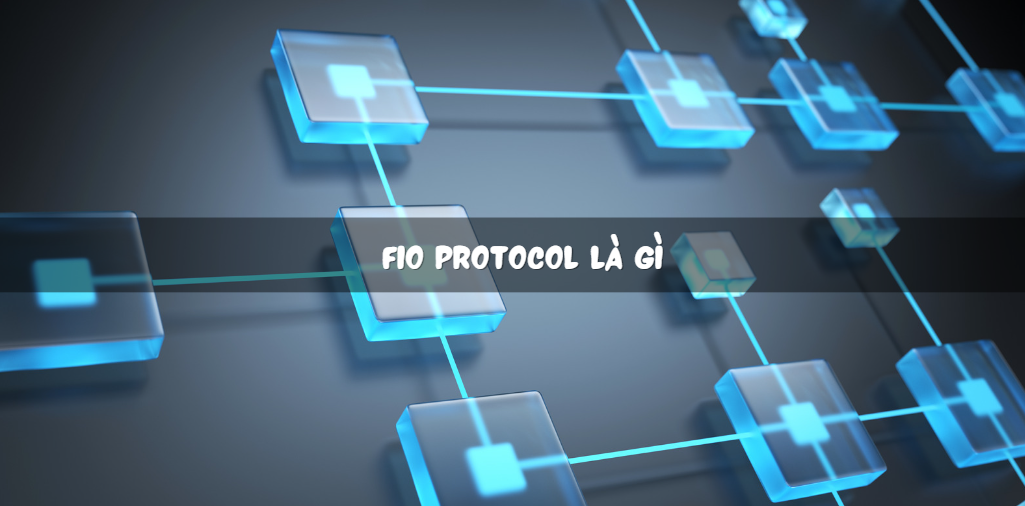Introduction
Blockchain technology and cryptocurrencies have revolutionized the digital world, offering secure, transparent, and decentralized ways to manage digital assets. However, the complexity of interacting with various blockchain systems and the cumbersome nature of cryptocurrency addresses have created significant barriers for mainstream adoption.
Enter the FIO Protocol, an open-source initiative designed to simplify blockchain interactions. In this comprehensive guide, we will explore “FIO Protocol là gì,” delve into its functionalities, and provide unique insights and analyses that go beyond the current literature.
What is FIO Protocol?
Defining FIO Protocol
FIO Protocol, or the Foundation for Interwallet Operability Protocol, is an open-source blockchain protocol that aims to simplify the user experience in blockchain transactions. It addresses the complexities associated with using lengthy and complex cryptocurrency addresses, providing a human-readable format for blockchain addresses. This innovation makes it easier for users to send and receive digital assets, enhancing the overall usability and accessibility of cryptocurrencies.
The Vision Behind FIO Protocol
The primary vision behind FIO Protocol is to eliminate the friction in blockchain transactions, making the process as seamless and user-friendly as possible. By providing a decentralized layer of usability, FIO Protocol aspires to become the industry standard for blockchain usability, facilitating mainstream adoption of digital currencies.
How FIO Protocol Works
FIO Addresses
One of the core components of the FIO Protocol is the FIO Address, which replaces the need for long and complex public keys with easy-to-read identifiers. For example, instead of using a string of random characters, a user can have an address like “alice@fio” to send and receive transactions.
FIO Requests
FIO Requests allow users to request payments, providing a secure and straightforward way to ask for funds. These requests are encrypted and can only be accessed by the involved parties, ensuring privacy and security.
FIO Data
FIO Data is an additional layer that enables users to attach metadata to their transactions. This metadata can include information such as invoices, payment details, and notes, making it easier to manage and track transactions.
Key Features of FIO Protocol
User-Friendly Addresses
The transition from complex alphanumeric strings to simple, memorable addresses is a game-changer for user experience. FIO Addresses make sending and receiving cryptocurrencies as easy as sending an email.
Interoperability
FIO Protocol is designed to work seamlessly with any blockchain, wallet, or exchange. This interoperability ensures that users can enjoy the benefits of FIO Protocol regardless of their preferred blockchain ecosystem.
Decentralization
As an open-source protocol, FIO Protocol operates on a decentralized network. This decentralization ensures that no single entity has control over the protocol, maintaining its integrity and trustworthiness.
Enhanced Security
With features like FIO Requests and encrypted metadata, FIO Protocol enhances the security of blockchain transactions. Users can conduct transactions confidently, knowing their data is protected.
Benefits of Using FIO Protocol
Simplified Transactions
By replacing complicated addresses with simple FIO Addresses, FIO Protocol significantly simplifies the transaction process. This ease of use can encourage more people to use cryptocurrencies, driving broader adoption.
Reduced Errors
The complexity of traditional cryptocurrency addresses often leads to errors, such as sending funds to the wrong address. FIO Protocol minimizes these risks by making addresses easy to read and remember.
Improved User Experience
FIO Protocol enhances the overall user experience by making blockchain interactions more intuitive. Features like FIO Requests and FIO Data add convenience and functionality, making digital transactions more manageable.
FIO Protocol Use Cases
Personal Transactions
Individuals can use FIO Protocol to simplify their personal cryptocurrency transactions. Whether sending money to friends or paying for services, FIO Addresses and Requests make the process straightforward.
Business Applications
Businesses can benefit from FIO Protocol by using FIO Data to attach invoices and payment details to transactions. This functionality can streamline accounting processes and improve financial management.
E-commerce
E-commerce platforms can integrate FIO Protocol to offer customers a more user-friendly payment experience. FIO Addresses can replace traditional payment gateways, providing a seamless and secure checkout process.
Remittances
The remittance industry can leverage FIO Protocol to simplify cross-border transactions. The ease of use and enhanced security features can make sending money internationally more efficient and reliable.
FIO Tokens and Their Role
What are FIO Tokens?
FIO Tokens are the native cryptocurrency of the FIO Protocol. They are used to pay for transactions on the network, register FIO Addresses, and participate in the governance of the protocol.
Utility of FIO Tokens
FIO Tokens serve multiple purposes within the ecosystem. They facilitate the creation of FIO Addresses, process FIO Requests, and enable users to vote on protocol improvements. This multifaceted utility ensures that FIO Tokens are integral to the functioning of the FIO Protocol.
Token Economics
The supply and demand dynamics of FIO Tokens are influenced by their utility and adoption. As more users and businesses adopt FIO Protocol, the demand for FIO Tokens is expected to increase, potentially driving up their value.
Security Aspects of FIO Protocol
Encrypted Transactions
FIO Protocol employs advanced encryption techniques to secure transactions and metadata. This encryption ensures that only the involved parties can access transaction details, maintaining privacy and security.
Decentralized Network
The decentralized nature of FIO Protocol ensures that there is no single point of failure. This decentralization enhances the resilience and security of the network, protecting it from attacks and manipulation.
Continuous Improvements
The FIO community actively works on improving the protocol’s security features. Regular updates and enhancements ensure that FIO Protocol remains robust and secure against emerging threats.
Integration with Wallets and Exchanges
Wallet Integrations
FIO Protocol can be integrated with various cryptocurrency wallets, enhancing their usability. Popular wallets like Trust Wallet, MetaMask, and Ledger support FIO Protocol, allowing users to benefit from its features.
Exchange Partnerships
Many cryptocurrency exchanges have partnered with FIO Protocol to offer seamless transactions. These partnerships ensure that users can enjoy a smooth trading experience, with simplified addresses and secure requests.
Developer Support
FIO Protocol provides extensive support for developers, offering APIs and SDKs to facilitate integration. This support encourages more wallets and exchanges to adopt FIO Protocol, expanding its reach and utility.
FIO Protocol Governance
Decentralized Governance
FIO Protocol operates on a decentralized governance model, allowing token holders to participate in decision-making processes. This democratic approach ensures that the protocol evolves in a way that benefits the entire community.
Voting Mechanisms
Token holders can vote on various proposals, including protocol upgrades, feature additions, and policy changes. This voting process ensures that the community has a say in the protocol’s development and direction.
Community Engagement
The FIO community actively engages in discussions and proposals, contributing to the protocol’s growth. This engagement fosters a collaborative environment where users, developers, and stakeholders work together to improve FIO Protocol.
Comparisons with Other Blockchain Protocols
FIO Protocol vs. ENS (Ethereum Name Service)
While both FIO Protocol and ENS aim to simplify blockchain addresses, they differ in scope and functionality. ENS is specific to the Ethereum blockchain, whereas FIO Protocol is blockchain-agnostic, offering broader compatibility.
FIO Protocol vs. Unstoppable Domains
Unstoppable Domains provides human-readable addresses but primarily focuses on domain names. FIO Protocol, on the other hand, offers a more comprehensive solution with features like FIO Requests and FIO Data, enhancing the overall user experience.
Unique Advantages of FIO Protocol
FIO Protocol’s unique combination of usability, security, and interoperability sets it apart from other blockchain protocols. Its focus on simplifying transactions while maintaining robust security makes it a superior choice for mainstream adoption.
Future Developments and Roadmap
Upcoming Features
The FIO development team continually works on new features to enhance the protocol. Upcoming developments include improved integration capabilities, additional security enhancements, and new functionalities to expand FIO Protocol’s utility.
Strategic Partnerships
FIO Protocol aims to establish more partnerships with wallets, exchanges, and other blockchain projects. These partnerships will drive adoption and increase the protocol’s reach, making it a standard in the blockchain industry.
Long-Term Vision
The long-term vision for FIO Protocol includes becoming the go-to solution for blockchain usability. By continually innovating and expanding its features, FIO Protocol aims to facilitate widespread adoption of cryptocurrencies and blockchain technology.
FAQs About FIO Protocol
What is FIO Protocol?
FIO Protocol is an open-source blockchain protocol designed to simplify the user experience in cryptocurrency transactions. It replaces complex addresses with human-readable FIO Addresses and offers features like FIO Requests and FIO Data for enhanced functionality.
How does FIO Protocol work?
FIO Protocol works by providing a decentralized layer of usability that integrates with any blockchain, wallet, or exchange. It simplifies transactions with FIO Addresses, allows users to request payments through FIO Requests, and enables attaching metadata with FIO Data.
What are FIO Tokens?
FIO Tokens are the native cryptocurrency of the FIO Protocol. They are used to pay for transactions, register FIO Addresses, and participate in the governance of the protocol.
How secure is FIO Protocol?
FIO Protocol employs advanced encryption techniques to secure transactions and metadata. Its decentralized nature further enhances security by eliminating single points of failure and protecting against attacks.
Can FIO Protocol be integrated with any wallet?
Yes, FIO Protocol is designed to be interoperable and can be integrated with any cryptocurrency wallet. Popular wallets like Trust Wallet, MetaMask, and Ledger support FIO Protocol, offering enhanced usability for their users.
Conclusion
In summary, FIO Protocol is a revolutionary solution aimed at simplifying blockchain interactions and making cryptocurrency transactions more user-friendly. By replacing complex addresses with human-readable identifiers, enabling secure payment requests, and attaching metadata to transactions, FIO Protocol enhances the overall usability and accessibility of digital assets.
Its open-source, decentralized nature ensures that it remains secure and trustworthy, while its interoperability allows seamless integration with various wallets and exchanges.
As the blockchain industry continues to evolve, FIO Protocol’s innovative approach to usability will play a crucial role in driving mainstream adoption.
Whether for personal transactions, business applications, or remittances, FIO Protocol offers a comprehensive solution that meets the needs of diverse users. By continually developing new features and forging strategic partnerships, FIO Protocol is well-positioned to become the industry standard for blockchain usability.
For those looking to explore the potential of FIO Protocol further, understanding its functionalities and benefits is the first step. With this comprehensive guide, we hope to have provided valuable insights and analyses that go beyond existing information, helping you grasp the full scope of “FIO Protocol là gì.”

















